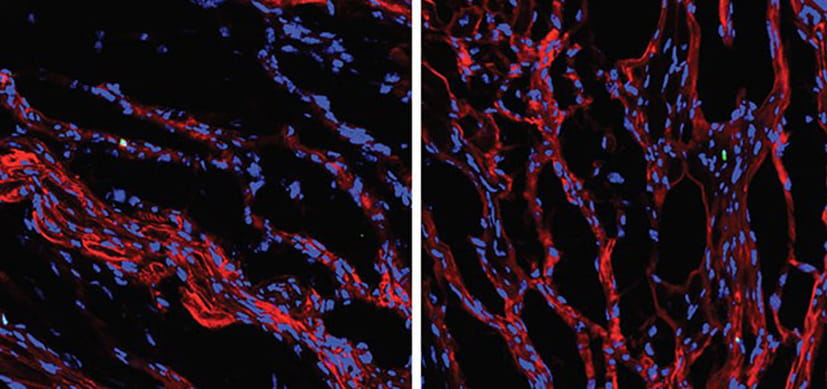
About
Biography
My research program’s goals delve into examining and manipulating molecular regulatory mechanisms in heart development and disease. Several years of our research work shows that regulatory hierarchies necessary for development of cardiac muscle, valves and fibroblasts also play a part in heart disease. My colleagues and I have put forward great effort and devotion toward analyzing the molecular and cellular mechanisms of valve development, muscle cell maturation and fibroblast lineages in normal and diseased hearts.
We have used mouse, avian, porcine and human systems to study regulatory mechanisms in heart development and disease in children and adults. Our research led us to discover that the regulatory mechanisms controlling maturation of heart muscle, valves and fibroblasts in the developing heart also contribute to adult cardiovascular disease.
My main research objective is to uncover heart disease processes by merging studies on the regulatory pathways that operate normal heart development with studies on the molecular development of disease in animal models and human explanted tissue. Our long-term goal is to find new therapeutic targets to treat heart disease.
I first became interested in the formation and function of the heart when studying chicken embryonic development. Over the years, we and others have found striking similarities in how the heart originally develops with how cardiac repair and disease progression arises in pediatric and adult heart disease.
My research has found critical roles for developmental regulatory programs in heart valve disease, cardiac fibrosis and heart failure. Furthermore, my colleagues and I have shown that both pediatric and adult cardiac disease are categorized by reactivating developmental gene regulatory programs. Most recently, our research has found that macrophages are a possible cause for heart valve degeneration in Marfan syndrome-related congenital mitral valve disease.
One of my main tasks as a principal research scientist is to mentor the trainees in my lab. Over the past 20 years, I have trained over 20 pre-doctoral and post-doctoral trainees to develop their research and careers. These trainees have gone on to become senior scientists in the pharmaceutical and biotechnology industries and gain faculty positions in academic research.
I began working at Cincinnati Children’s Hospital Medical Center in 1995 and have more than 30 years of experience in my field. My research has been funded by the National Institutes of Health (NIH) and the American Heart Association.
Awards and recognition:
- 1st Charlotte R, Schmidlapp Women Scholar, currently chair of the selection committee to promote career advancement of women faculty at Cincinnati Children’s
- Associate Editor of The Anatomical Record
- Board member and Chair of Science Advisory Committee American Association for Anatomy (AAA)
- Children’s Cancer Research Fund endowed chair given in recognition of scientific accomplishments and service to Cincinnati Children’s
- Fellow of the American Association for Anatomy (FAAA)
- Fellow of the American Heart Association (FAHA)
- Purdue University Distinguished Woman Scholar
BA: Oberlin College, Oberlin, OH, 1986.
PhD: Purdue University, West Lafayette, IN,1992
Fellowship: Cornell University Medical College, New York, NY,1992-1995.
Services and Specialties
Publications
Localized Prox1 Regulates Aortic Valve Endothelial Cell Diversity and Extracellular Matrix Stratification in Mice. Arteriosclerosis, Thrombosis, and Vascular Biology. 2023; 43:1478-1493.
Btg1 and Btg2 regulate neonatal cardiomyocyte cell cycle arrest. Journal of Molecular and Cellular Cardiology. 2023; 179:30-41.
Cardiomyocyte-fibroblast crosstalk in the postnatal heart. Frontiers in Cell and Developmental Biology. 2023; 11:1163331.
Therapeutic CCR2 Blockade Prevents Inflammation and Alleviates Myxomatous Valve Disease in Marfan Syndrome. JACC: Basic to Translational Science. 2022; 7:1143-1157.
Porcine Models of Heart Regeneration. Journal of Cardiovascular Development and Disease. 2022; 9:93.
Epigenetic Regulation of Heart Failure: Cell Type Matters. Circulation Research. 2021; 129:414-416.
Periostin-expressing Schwann cells and endoneurial cardiac fibroblasts contribute to sympathetic nerve fasciculation after birth. Journal of Molecular and Cellular Cardiology. 2021; 154:124-136.
Transcriptional Regulation of Postnatal Cardiomyocyte Maturation and Regeneration. International Journal of Molecular Sciences. 2021; 22:3288.
Cardiomyocyte cell cycling, maturation, and growth by multinucleation in postnatal swine. Journal of Molecular and Cellular Cardiology. 2020; 146:95-108.
Mechanisms of heart valve development and disease. Development (Cambridge). 2020; 147:dev183020.
From the Blog
Discovery Suggests Potential Non-Surgical Option for Children, Adults with Marfan Syndrome
Katherine Yutzey, PhD1/14/2020






